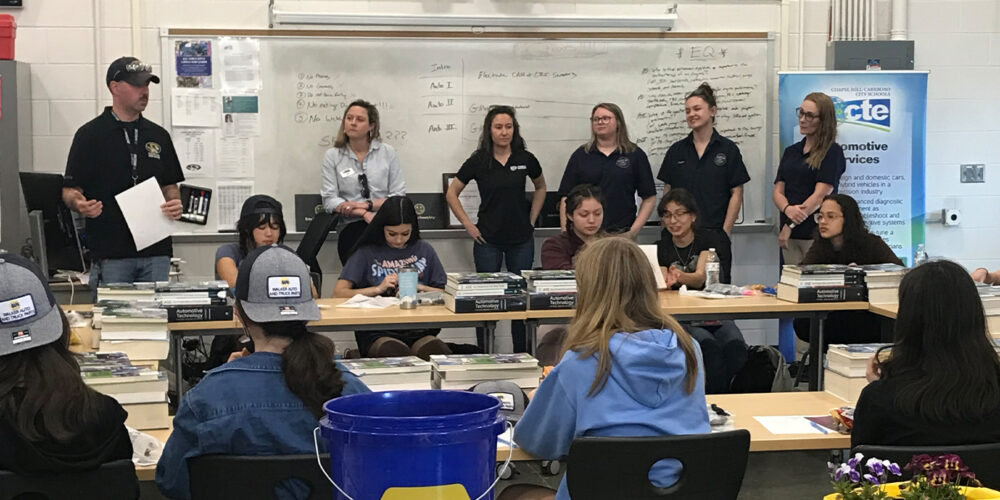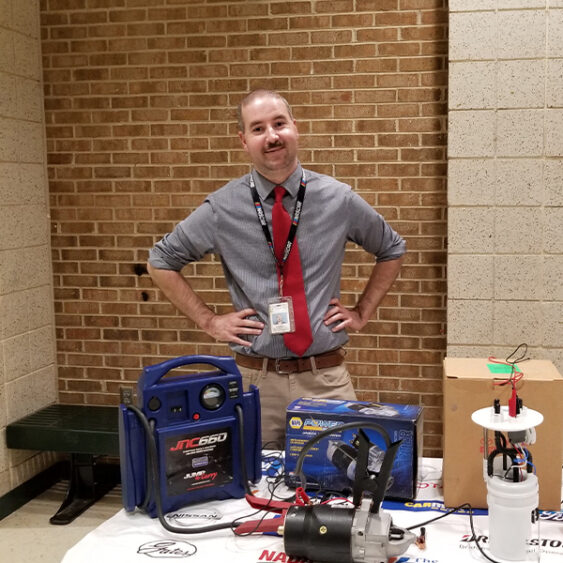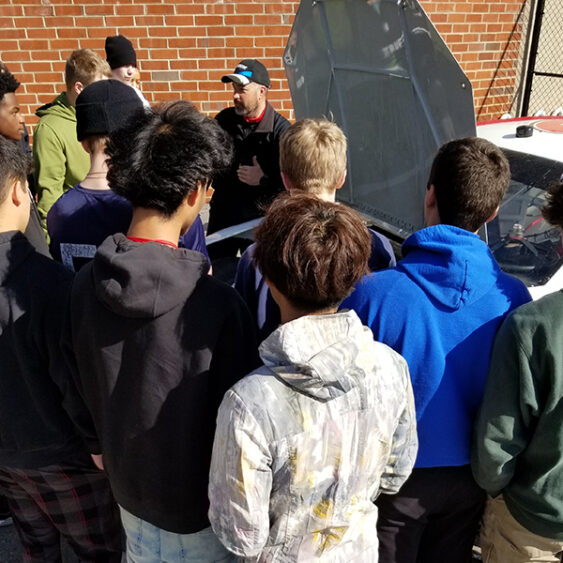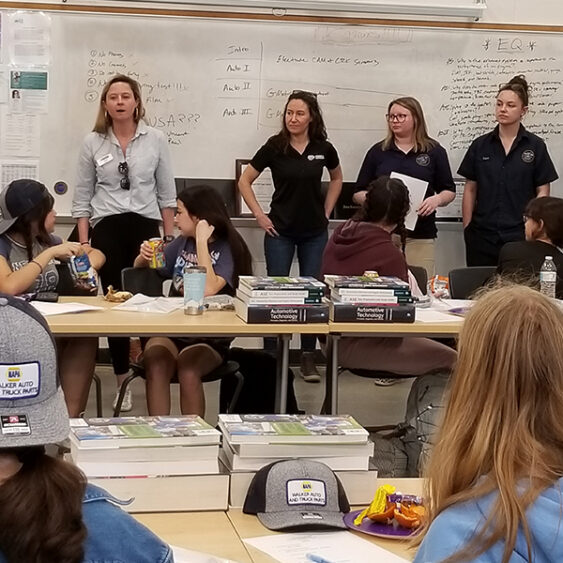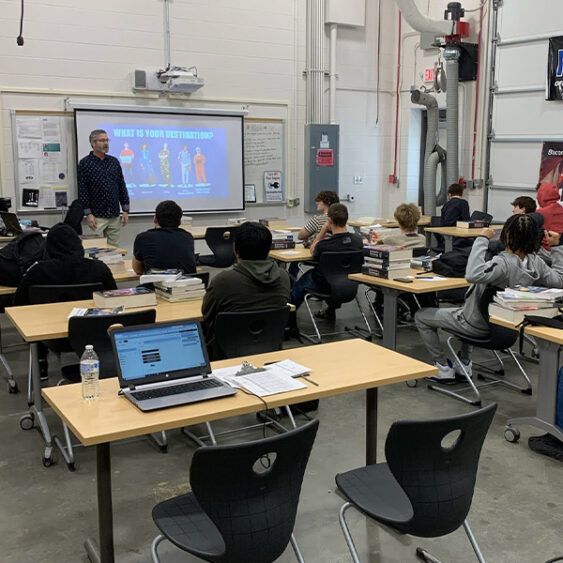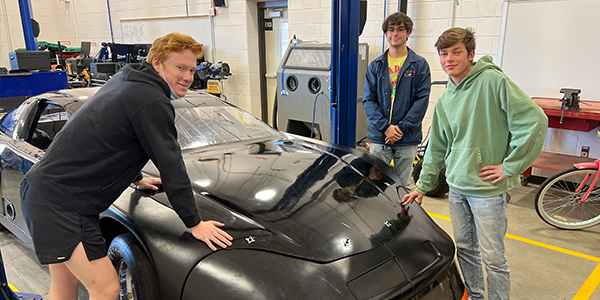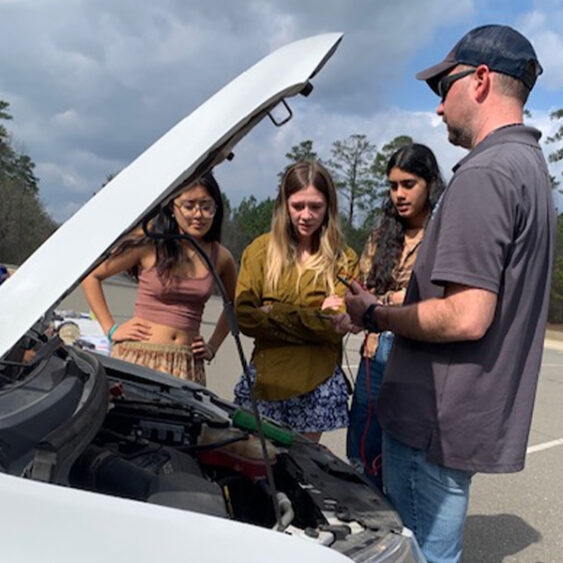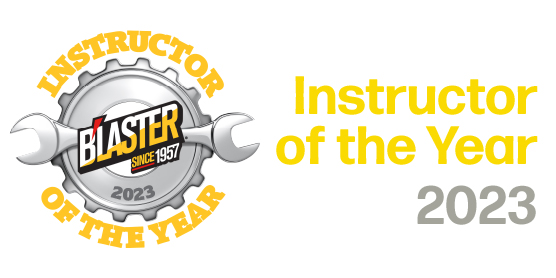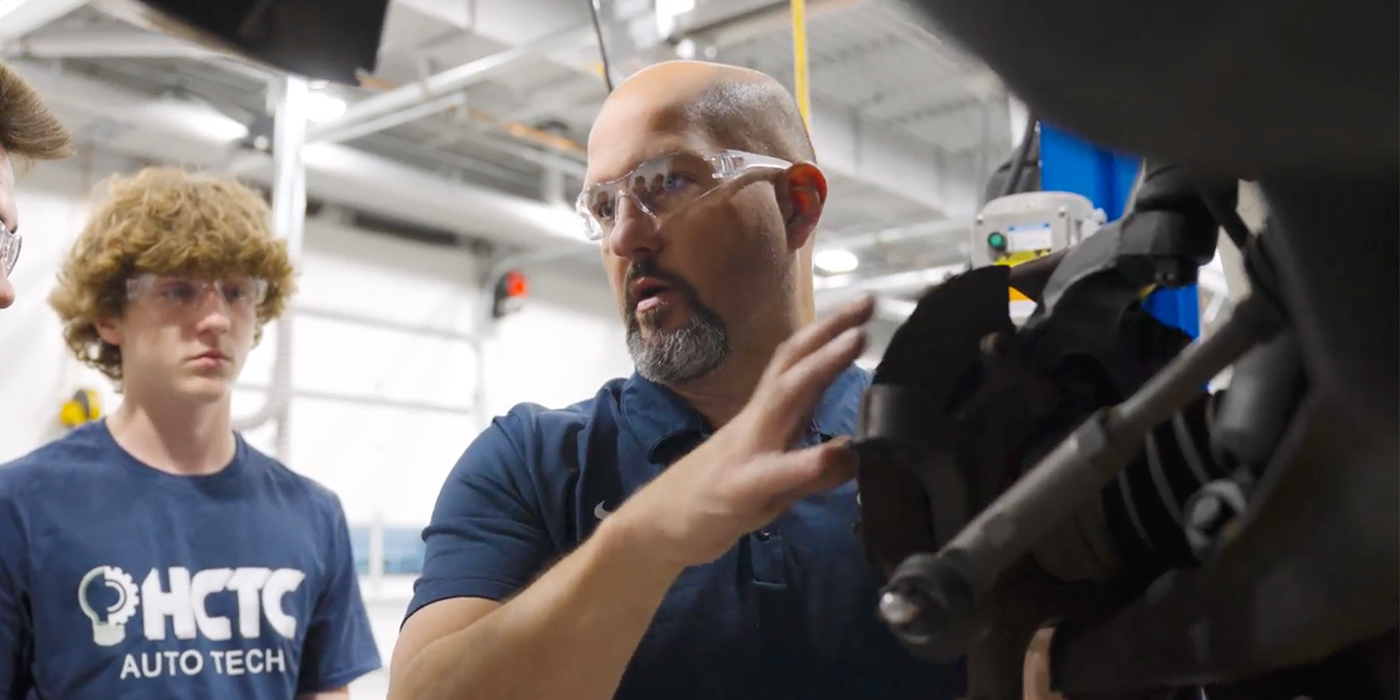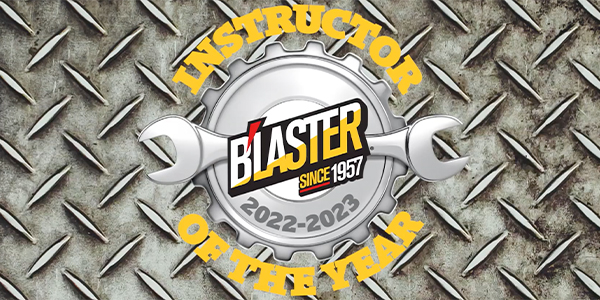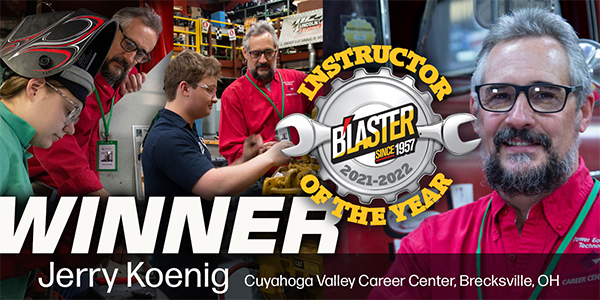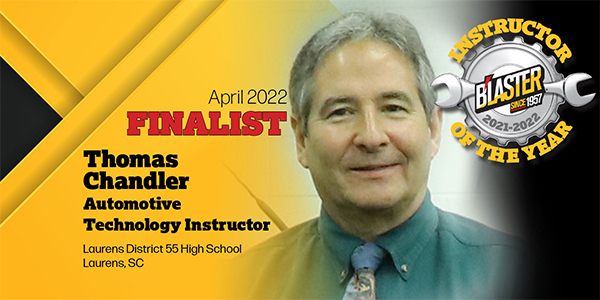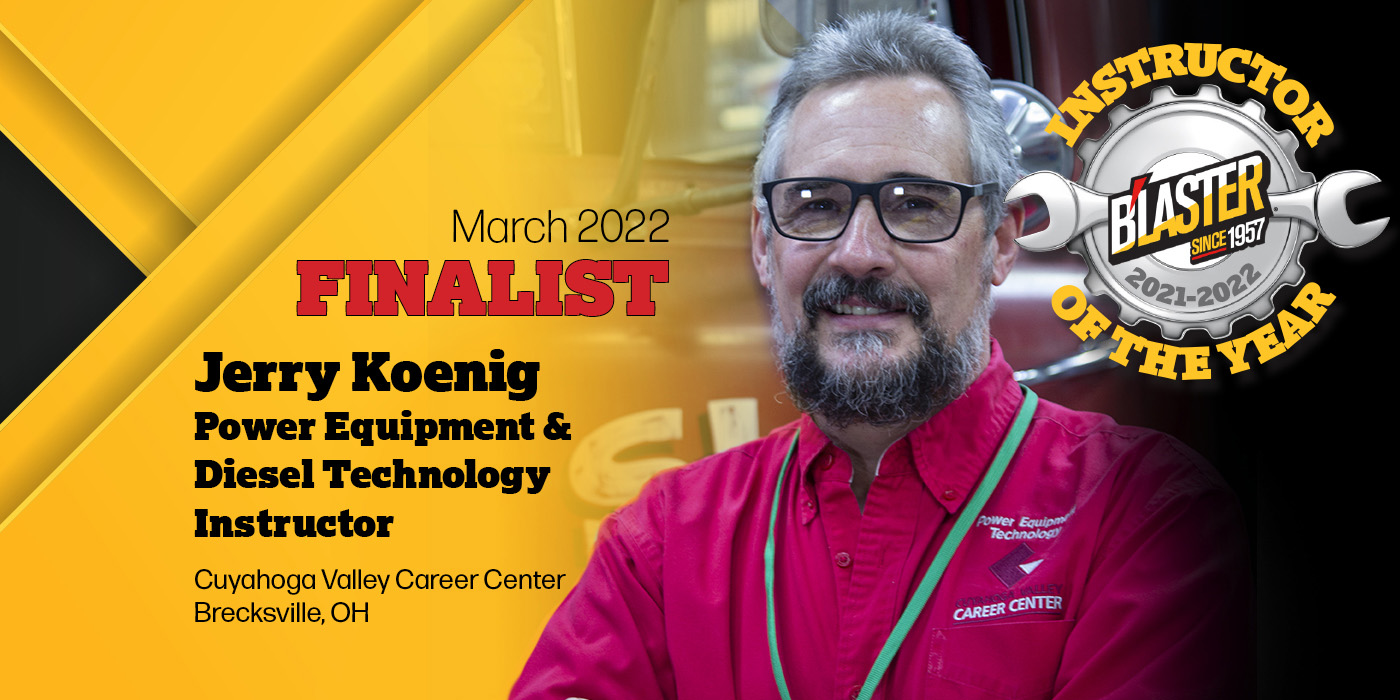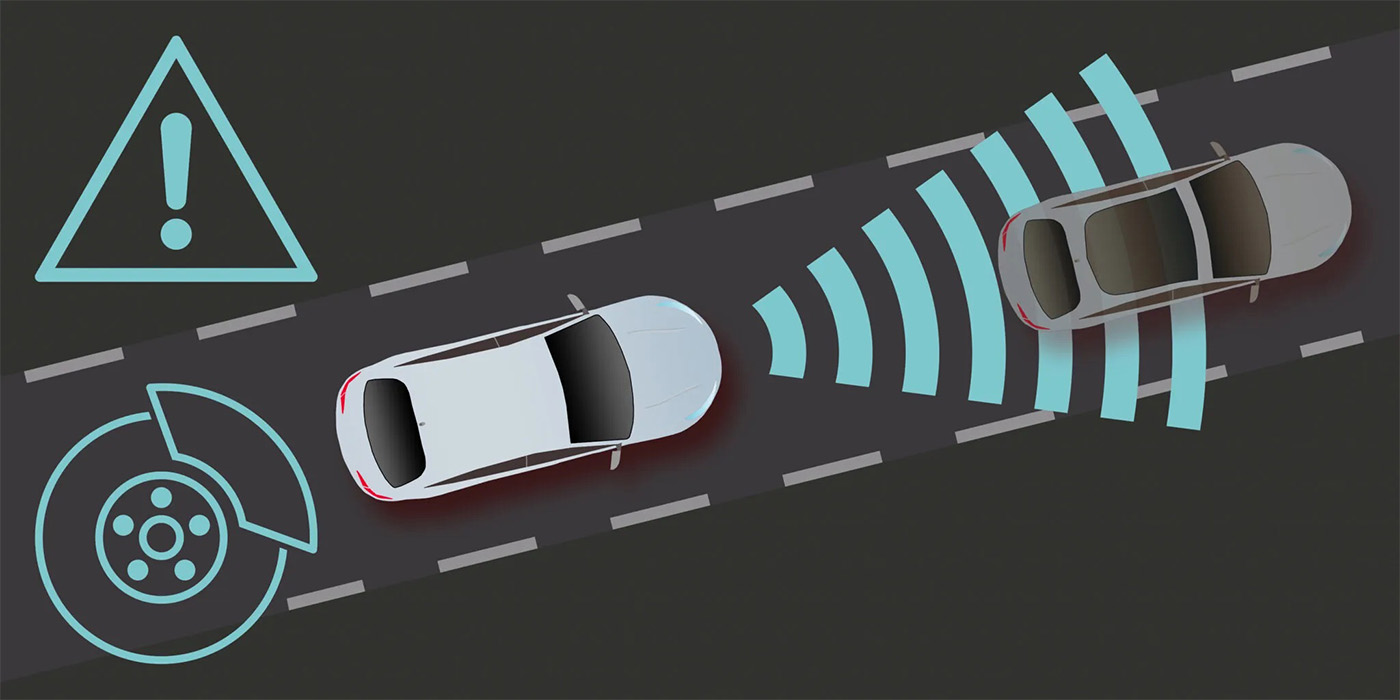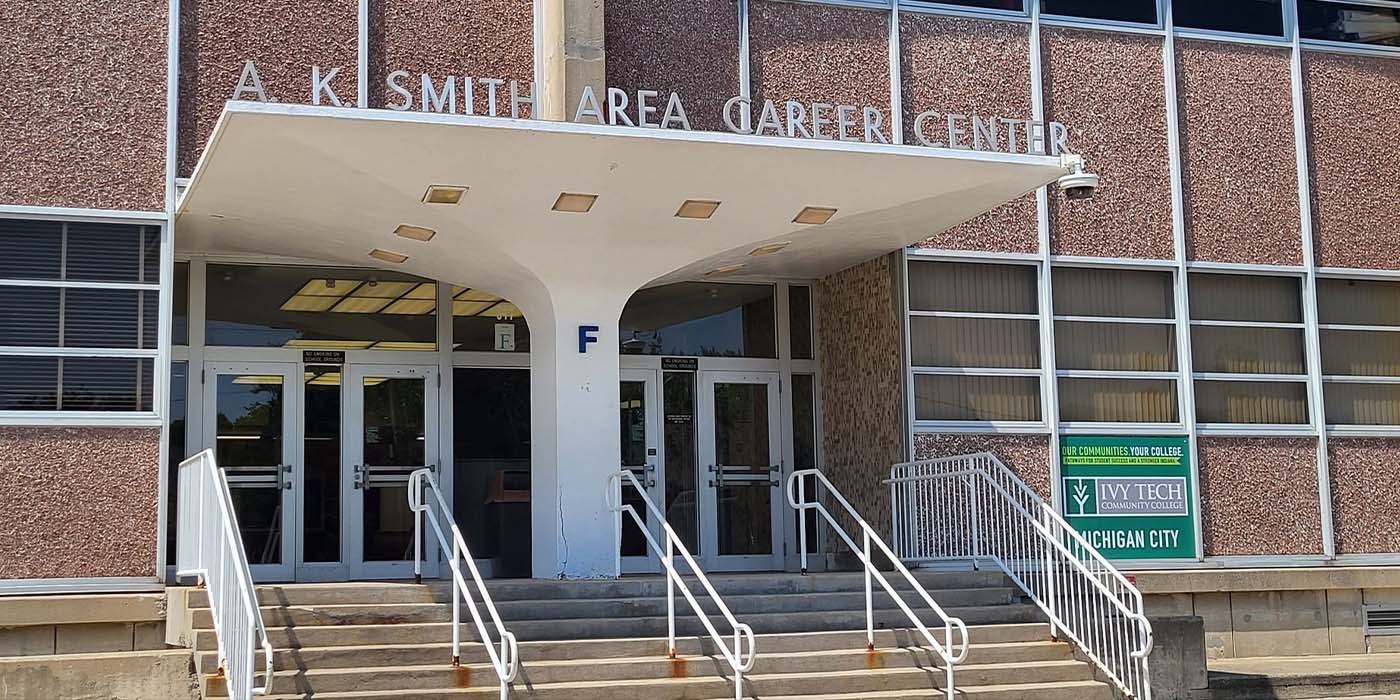“I always loved working on cars, from the day I could walk,” says Robert Ballard. “I could remember seeing and helping my dad work on our cars in the garage; I remember always waiting to collect the next Hot Wheels car; but my passion for working on cars really came together in High School, when I signed up for a collision repair class.”
Ballard, automotive instructor at Chapel Hill High School in Chapel Hill, NC, admits he wasn’t a great traditional student while he was in high school. Thankfully, that automotive shop class – and particularly his instructor, Mr. Perry – put him on the track for success.
“The class was great, but Mr. Perry was amazing! I went from being a D and C student to a straight-A student in college,” Ballard explains. “I went to college at Durham Tech in North Carolina where I honed my automotive skills. This got the attention of a specialty automotive electrical shop in the area and I was hired as a lead electrical technician. So, during the day I would work on cars and at night I got the opportunity to teach at the local community colleges. This was a way for me to give back to the students and teachers that had always been heroes to me.”
Ballard explains that he was teaching at Durham Tech and Wake Tech when he was 17 years old, which helped prepare him for the call he got from Chapel Hill High.
“Six years ago, after about 10 years of working in the shop at day and teaching at night, I was asked by Chapel Hill High to come and teach at the high school level. This was an amazing opportunity to become that teacher that I had in high school and hopefully change students’ lives like he did mine. “
Robert Ballard is the March Finalist in Tomorrow’s Technician’s 2022-2023 Instructor of the Year Program, presented by B’laster Industries.
Over the past six years, Ballard’s peers explain, he has lead a team for facilities accreditation renewal, tripled the size of the advisory group and got the members engaged in the program, initiated a NASCAR racing component into the 4th level of the program and this year gave up both his planning periods to meet the student enrollment demands. Ballard also established the school’s first apprenticeship program and he remains a part time instructor at Durham Tech to help students continue their education at the next level.
The enthusiasm he has brought to the program – along with industry support and extracurricular activities – has proved to be a success.
“When I first got to Chapel Hill High School, we started out with about 35 kids,” Ballard says, “in an Auto I or intro and then Auto II class. Now we have a hundred kids in the program. We’re completely maxed out, offering all four levels of automotive that the state requires.”
Ballard’s school does not use block scheduling, so there are seven periods a day. Most teachers have two planning periods – not Ballard. “There was such a need and a demand for automotive that I decided to just waive my planning periods and teach those Auto I kids for those periods. We don’t limit basic automotive to just freshmen, so if you’re a senior and you just realized, hey, I’m interested in cars, you can take the intro class.”
To create interest in the program, Ballard says he starts early – at the middle school and even elementary school levels. “We provide a little demonstration to the elementary school kids, just to get them interested at a earlier age. We definitely do middle school all the time. And then we do reach out to the other high school programs, because I’m the only automotive program in the district currently.”
And within his school, he partners with math and science instructors to help illustrate topics they may talk about theoretically.
“We work with the physics class, because physics is a big, big part of automotive. Just about everything you learn in physics is related to cars. In addition, we’re actually going to have a lesson with the chemistry class in the next couple weeks because they have a whole section on batteries. We’re directly going to work with the chemistry department now, so that way we can provide that instruction. Because a lot of them I don’t think a lot of them always understand the formulas – what they’re doing or why they’re doing it – unless they really put their hands on it.”
Ballard says his collaborations with local advanced technical training programs allow him to be creative with curriculum.
“Our program is able to work with so many technical community colleges,” he says. “We work with Wake Tech, Durham Tech, Forsyth, Alamance Community College and NASCAR Technical Institute. They bring in speakers, so we also invite math classes, English classes and other programs to see how the things they’re learning relate to automotive and how automotive relates to them.”
Ballard says one of the most unconventional projects he has in place involves getting his students involved in motorsports.
“With the help of our advisory board members, our automotive program now owns a late model stock car, and the students work in the pit crew at the Wake County Motor Speedway on Friday nights. The students have earned their NASCAR pit crew license and can enter any pit area at a NASCAR race,” says Ballard. “Right now the kids do not drive the late model stock car. But with the automotive racing club I do during lunch, they’re working on what’s called a bomber car. The bomber car is a lower class, so we’re probably going to be able to get a student into that car next year. They’re working on it this year for next year.”
In addition to motivating his students through racing, Ballard wants to inspire them through mentorship.
“My special population coordinator looks at all the demographics of the students for each program,” Ballard says. “Overall, automotive is good with demographics, except for female to male. Or female population is a lot smaller than our male population. This year, we started offering female lunch and learns during lunch periods. Girls come into the program and learn about automotive from women in the industry. We’ve had female technicians and managers and also owners of parts stores come in and talk to the students and, in an upcoming lunch and learn, we’re going to have them actually get in the shop, do some minor maintenance to vehicles.”
Participation has been amazing, Ballard admits. “We had 48 girls show up to that first female lunch and learn. And since we do dual enrollment from another school, I’m actually pulling some of those females also. They’re probably going to end up signing up for the courses and traveling next year as a group.
“I’m trying to make them feel comfortable in the automotive program; trying to link them up with other females who might sign up with them, so it’s not just one female in a class. That way, they don’t feel like they’re put in the wrong spot or out of place in the automotive industry. It’s not just a male-dominated world anymore. Females have a place in automotive field as well.
“I try not to discriminate or put my students in a box. Instead, I try to allow them to make their own pathway. I think it’s very important that the students have those options. Not everybody’s going to have the same pathway of going to one particular college,” he says.
“It really depends on the manufacturer or independent shop that they get into, which college that they’ll probably need to go through that will best fit that student. I bring all these colleges in to talk to the students. But also, we’ve set up pre-apprenticeship programs with all these different companies.”
Ballard is proud of the apprenticeship program now in place through his school.
“We were the first ones to set up a free apprenticeship program in North Carolina for automotive,” he says. “That allows students to start working at 16 – students who do get jobs in my program, have their college tuition completely waived. “
The key to success, Ballard says, is to ensure that his efforts meet the industry’s demands – and for that he credits his participation in and partnership with industry advisory boards.
“It’s why I work with these different businesses to then point those kids in the right direction of the college they need to go to. But it also helps me to maintain those pathways and those pre-apprenticeship programs with all the different companies. So, it’s really a big circle to help these students out because I need students and they need technicians. We all work together to try to make it work.”
Ballard says being recognized as a finalist in the B’laster Instructor of the year program is a good feeling, but it’s actually recognition of something bigger.
“I think it’s bigger than just me and it’s even bigger that just automotive. I feel like this is a good thing for CTE overall,” he explains. “It’s a good thing, because in the past, CTE courses were often looked down upon. You didn’t necessarily hear of teachers in CTE courses getting recognized. I feel like that’s changing this year, on a larger scale. It’s bigger than just me. It’s recognizing not only CTE, but also other teachers and their accomplishments and their programs.”
For more information on the 2022–2023 B’laster Instructor of the Year program or to nominate a worthy instructor, visit Tomorrow’s Technician today.

